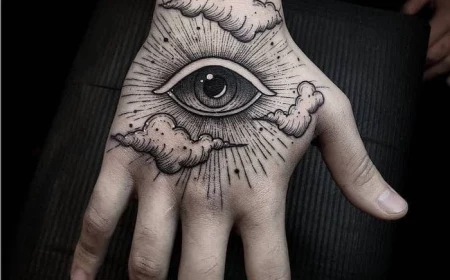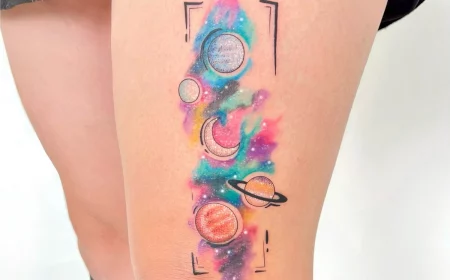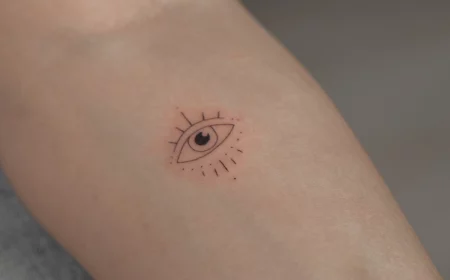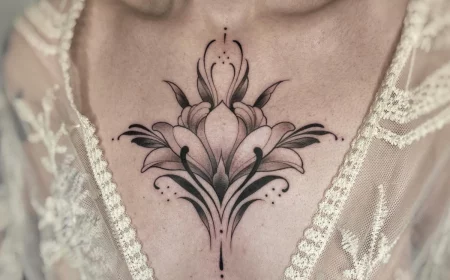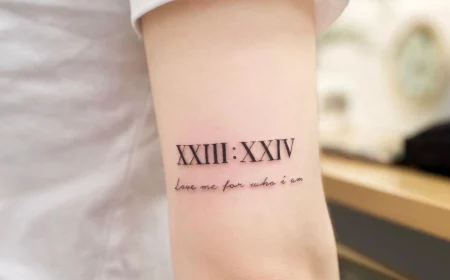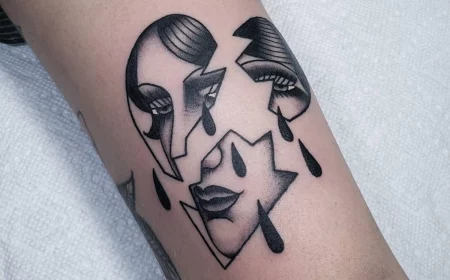The Real Deal on Knee Tattoos: What to Expect from the Pain, Price, and Healing
After countless hours in the tattoo chair, both as an artist and a collector, I can tell you one thing for sure: the knee is a whole different beast. It’s easily one of the most challenging, and honestly, most rewarding spots to get tattooed. It’s not a placement you pick on a whim; it’s a statement piece that demands a skilled artist, a ton of client commitment, and some serious grit.
In this article
- Why Is the Knee So Tricky? A Quick Tour
- Choosing a Design That Lasts
- Your Gameday Checklist: How to Prep for Your Appointment
- The Unfiltered Truth on Pain (and Numbing Cream)
- Healing Your Knee: A Week-by-Week Survival Guide
- Finding a Pro and What to Watch Out For
- The Bottom Line: Is It Worth It?
- Galerie d’inspiration
But when it’s done right? A knee tattoo becomes a powerful piece of art that literally moves with you. I’ve seen what works, what falls apart, and all the little details in between. So, let’s get into it. I want to give you the unvarnished truth so you can walk into a shop informed and walk out with a tattoo you’ll be proud of for life.
Why Is the Knee So Tricky? A Quick Tour
To really get why knee tattoos are such a big deal, you have to understand the canvas. The knee isn’t a nice, flat surface like your forearm. It’s a complex, bony joint covered in skin that changes texture and thickness every few inches.
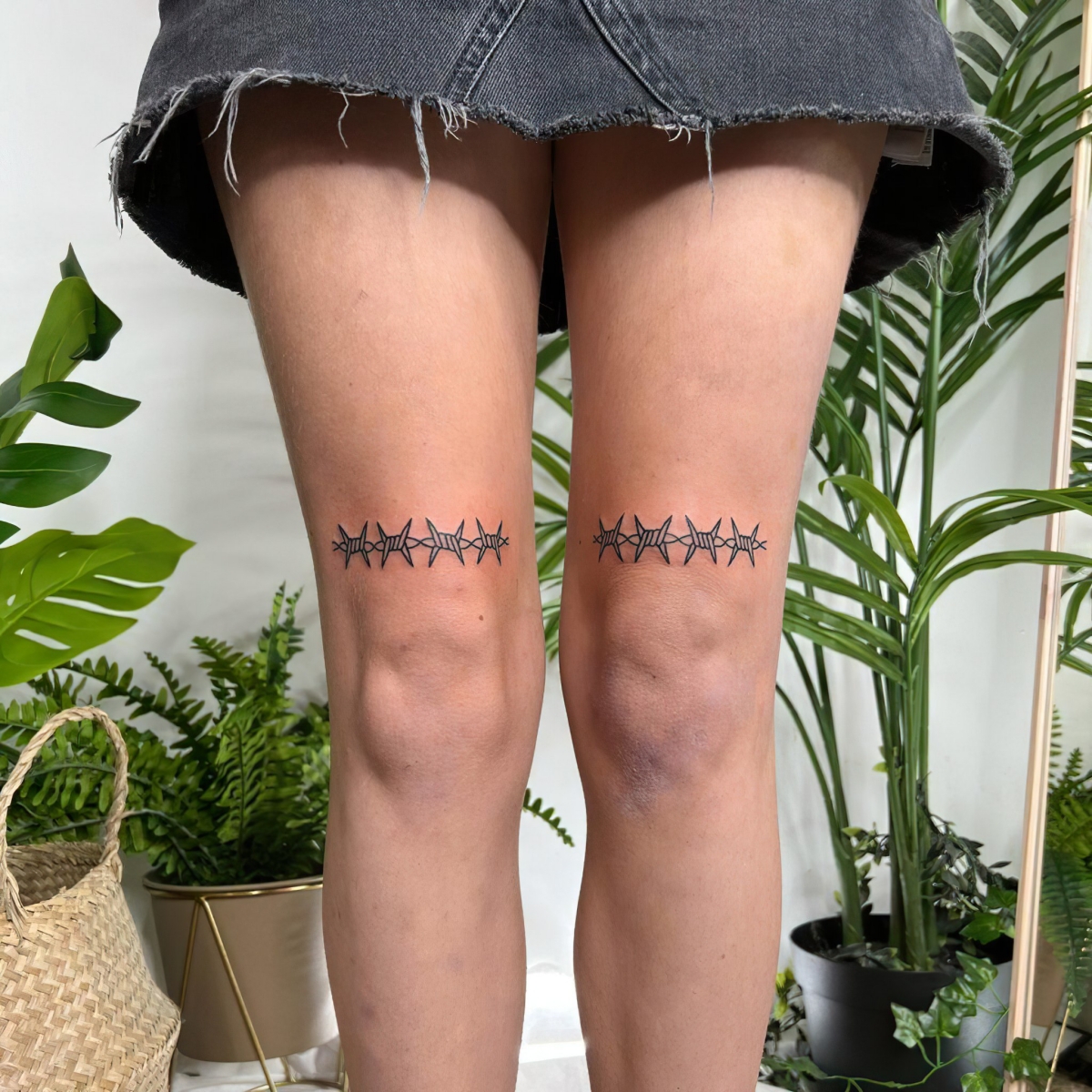
First up, you’ve got the kneecap. The skin stretched over that bone is paper-thin with almost zero fat or muscle for padding. When the machine is running here, you feel it. Clients often describe it as a deep, rattling vibration that travels right through the bone—totally different from the usual sharp sting. For the artist, this means needle depth has to be absolutely perfect. A fraction too shallow and the ink falls out; a fraction too deep and you get a dreaded “blowout,” where the ink spreads into a blurry mess under the skin.
Then you have all the skin around it. The sides of the knee are a bit more forgiving, but they stretch and bunch up constantly. The areas just above and below the kneecap are what I call “mobile skin.” It looks one way when you’re standing and completely different when you’re sitting. A pro will always check the stencil with your leg bent at a 90-degree angle and fully straight to avoid a design that looks awesome in one position but turns into a distorted blob in the other.
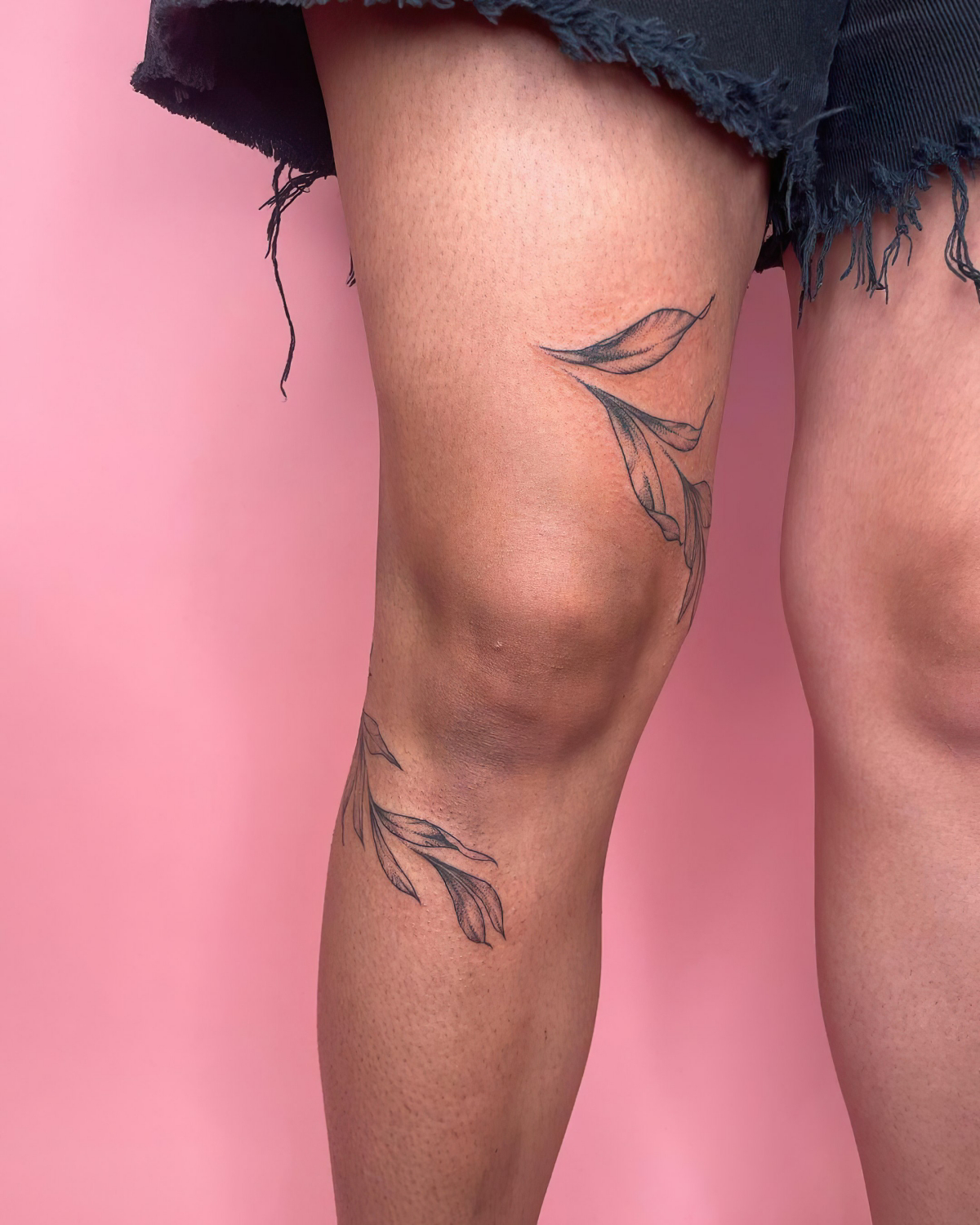
And we can’t forget the “knee ditch”—that soft, sensitive spot right behind your knee. To be frank, this area is packed with nerve endings and is incredibly tender. The skin is thin, stretchy, and a hotspot for pain. It’s also a high-friction area that sweats a lot, which can make healing a real pain if you’re not careful.
Choosing a Design That Lasts
While a good artist can adapt almost any style, some designs are just better suited for the high-motion, high-impact life of a knee. Over time, you learn what holds up and what fades into a sad smudge.
Styles That Are Built to Last
- American Traditional: This style is practically made for knees. It uses bold, black outlines and solid, packed color. Those thick lines act like a container, keeping the whole design crisp and readable for decades. Classic subjects like eagles, roses, and animal heads fit the round shape of the joint perfectly.
- Mandalas and Geometric: These are amazing for knees because they use the kneecap as a natural center point. The key here is BOLDNESS. Super delicate, fine linework can blur together over the years as the skin moves and ages. I always push my clients to go a little thicker with the lines than they might initially want.
- Japanese Traditional (Irezumi): This style is all about flowing with the body’s natural curves. Designs like peonies, chrysanthemums, or classic masks are often designed specifically to fit joints like the knee and elbow, making them a fantastic choice.
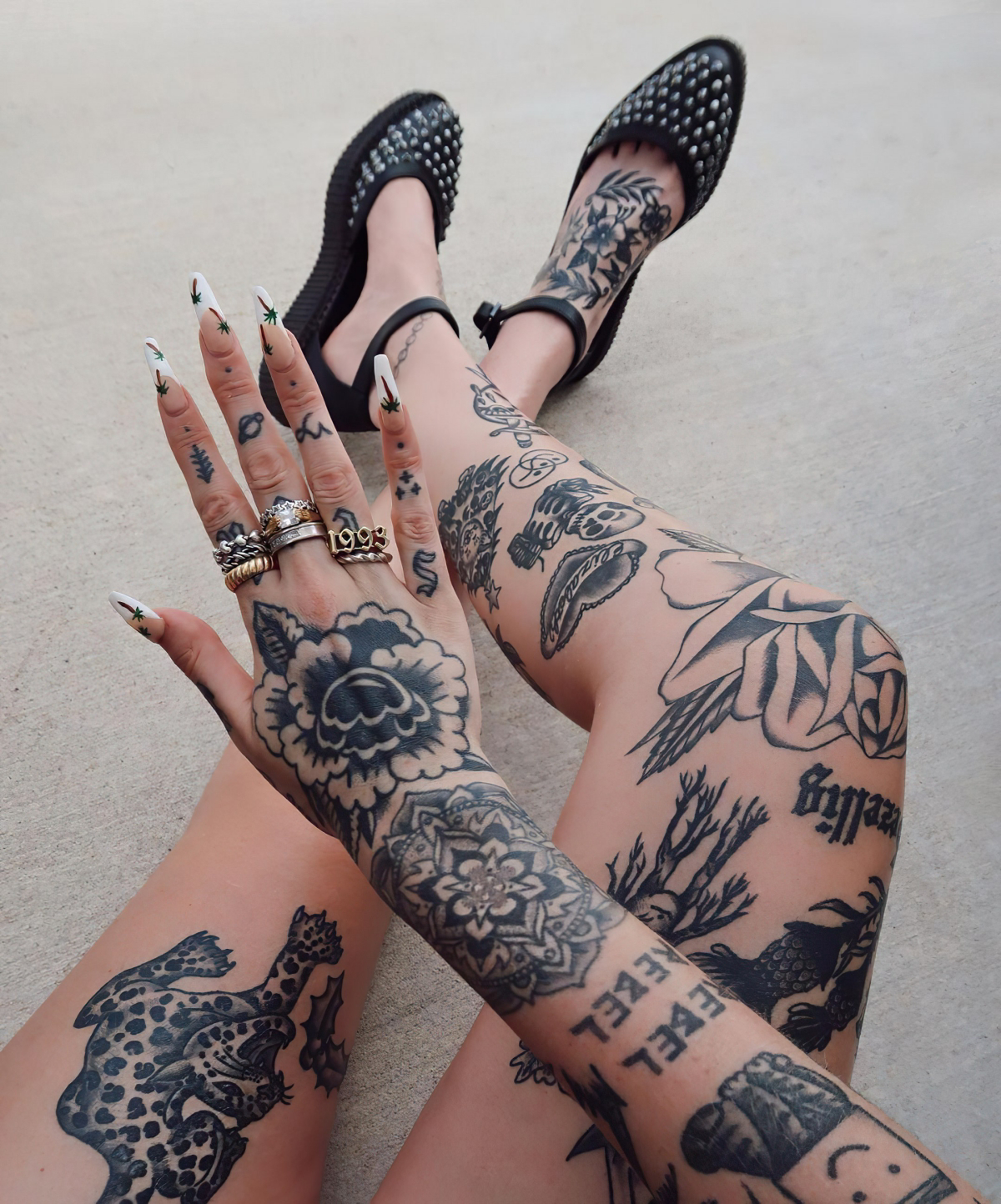
Styles That Need a Second Thought
- Fine-Line and Micro-Realism: Look, I approach these requests with a serious conversation. The constant bending, stretching, and sun exposure on a knee is brutal on delicate tattoos. Those tiny, intricate details are likely to fade or blur much faster here than on a bicep. It’s possible, but you have to accept that it will likely need more frequent touch-ups.
- Watercolor: This is a tough one. Watercolor tattoos often skip black outlines, which can be a problem on a knee. Without a strong border to hold everything in, the colors are more likely to spread and lose their shape over time. If your heart is set on it, I’d strongly recommend incorporating at least some black linework to give the design a solid anchor.
Your Gameday Checklist: How to Prep for Your Appointment
Before we even talk about the pain, let’s talk about setting yourself up for success. How you prepare can make a huge difference in how well you handle the session. Don’t be a hero; be smart.
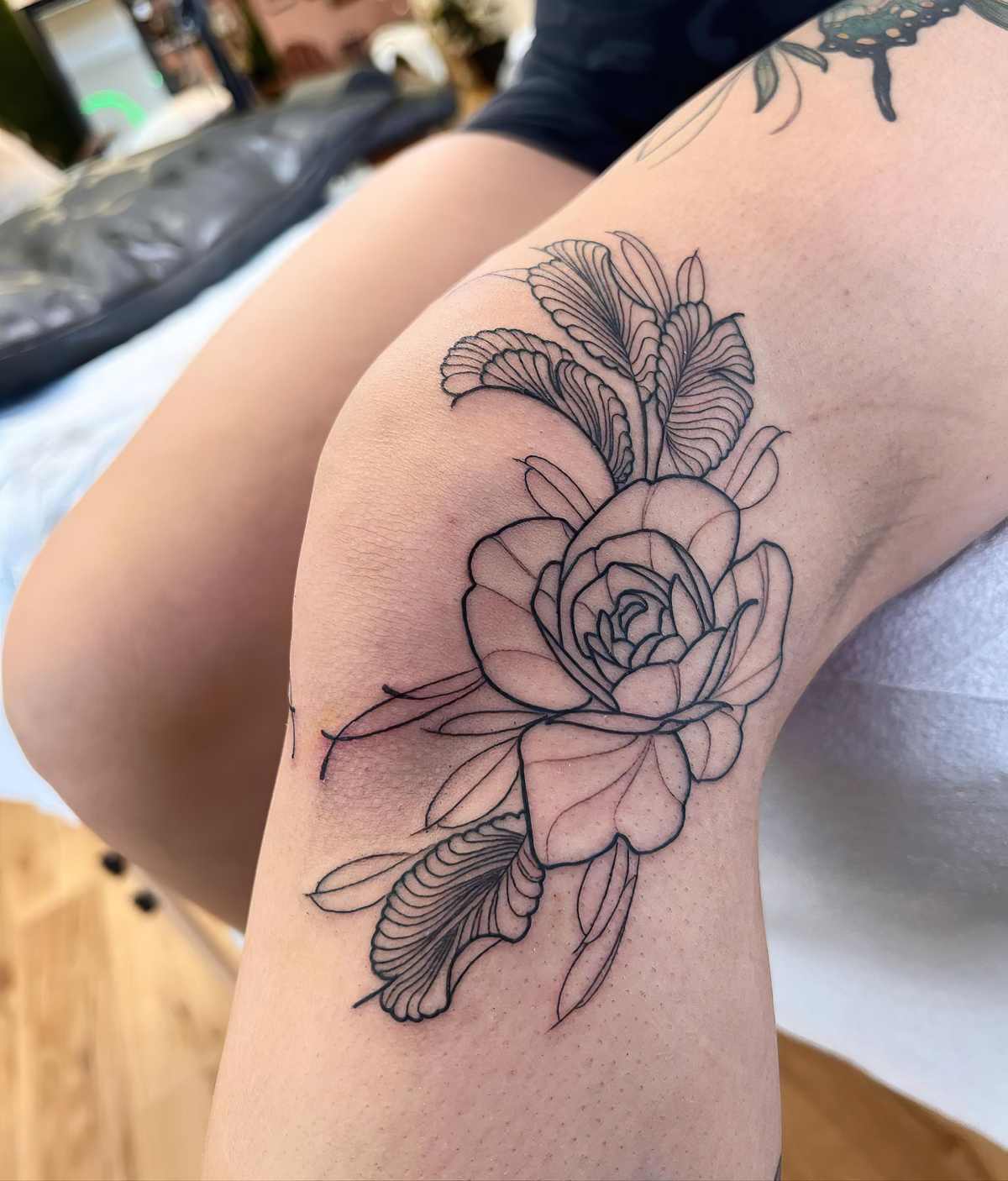
Here’s your pre-appointment checklist:
- Eat a huge meal. No, a bigger one. Your body is about to go through a lot, and it needs fuel to manage pain and adrenaline. Don’t show up on an empty stomach.
- Wear the dumbest shorts you own. Seriously. Loose, comfortable shorts that can be easily rolled up are your best friend. You’re going to be in some weird positions, and you’ll want to be comfortable.
- Hydrate and bring snacks. Drink plenty of water the day before and the day of. Toss a Gatorade or a soda in your bag for a quick sugar boost if you start to feel woozy.
- Bring distractions. Headphones are a must. A good podcast, a long playlist, or an audiobook can help you zone out. Just check with your artist first to make sure it’s cool.
The Unfiltered Truth on Pain (and Numbing Cream)
Alright, let’s get real. Getting your knee tattooed hurts. A lot. On a pain scale of 1 to 10, most people put it somewhere between a solid 7 and a straight-up 10. The bony kneecap, the tender sides, and that nerve-filled ditch are all hotspots.
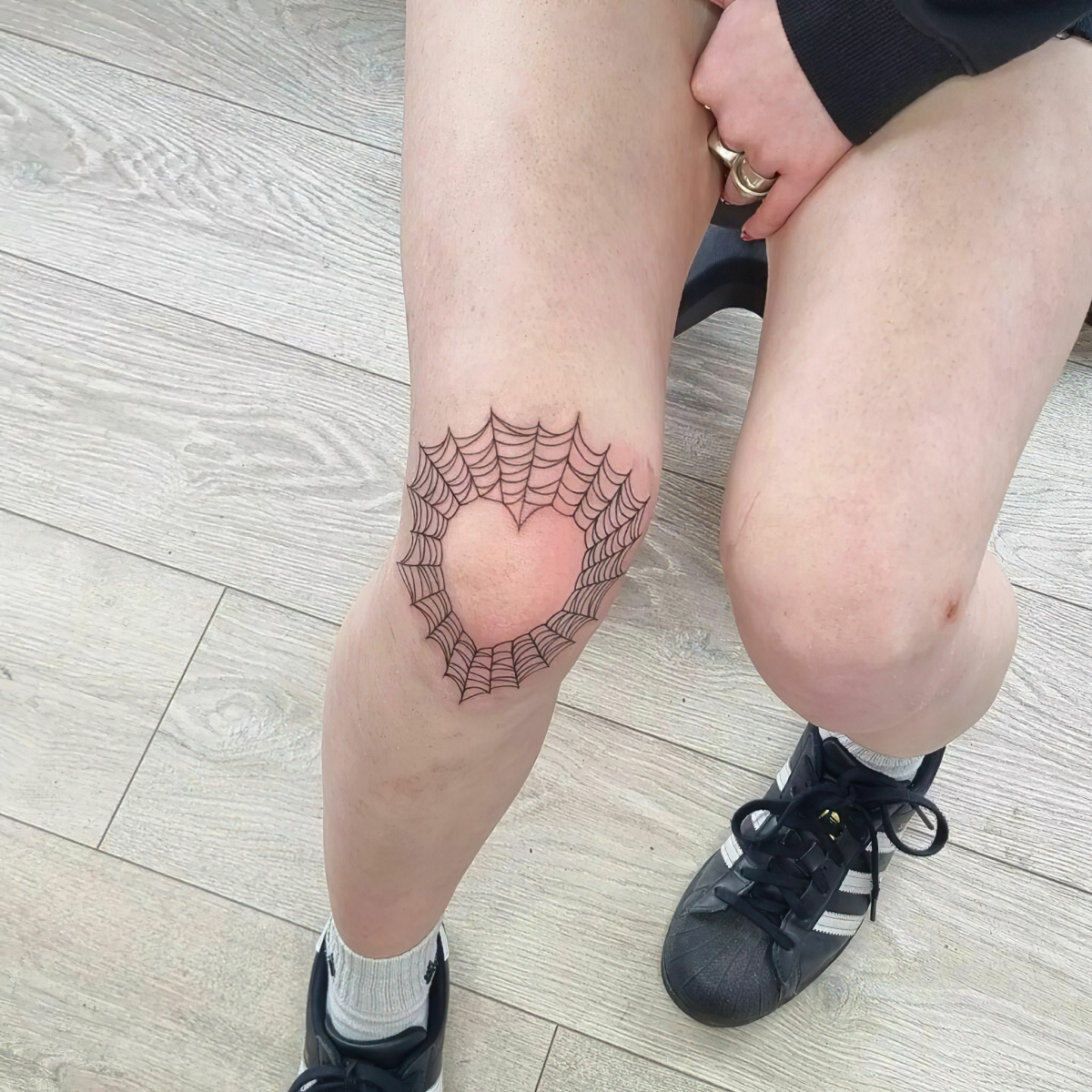
- Kneecap Pain: A deep, vibrating, rattling feeling.
- Sides of Knee Pain: A sharp, hot, stinging sensation.
- Knee Ditch Pain: For many, this is the absolute worst. It’s a fiery, burning pain that can make your whole leg twitch.
By the way, clients always ask about numbing cream. Here’s the deal: some artists really dislike it because it can change the texture of the skin, making it feel rubbery and harder to work with. However, for a spot this intense, some artists are open to it. The golden rule is you MUST talk to your artist about it beforehand. Never just show up with cream on. They might have a specific brand they trust and a procedure for applying it that won’t mess up the tattoo process.
Healing Your Knee: A Week-by-Week Survival Guide
Healing a knee tattoo is an active job. You can’t just ignore it. Your knee moves all day, every day, and you have to manage that.
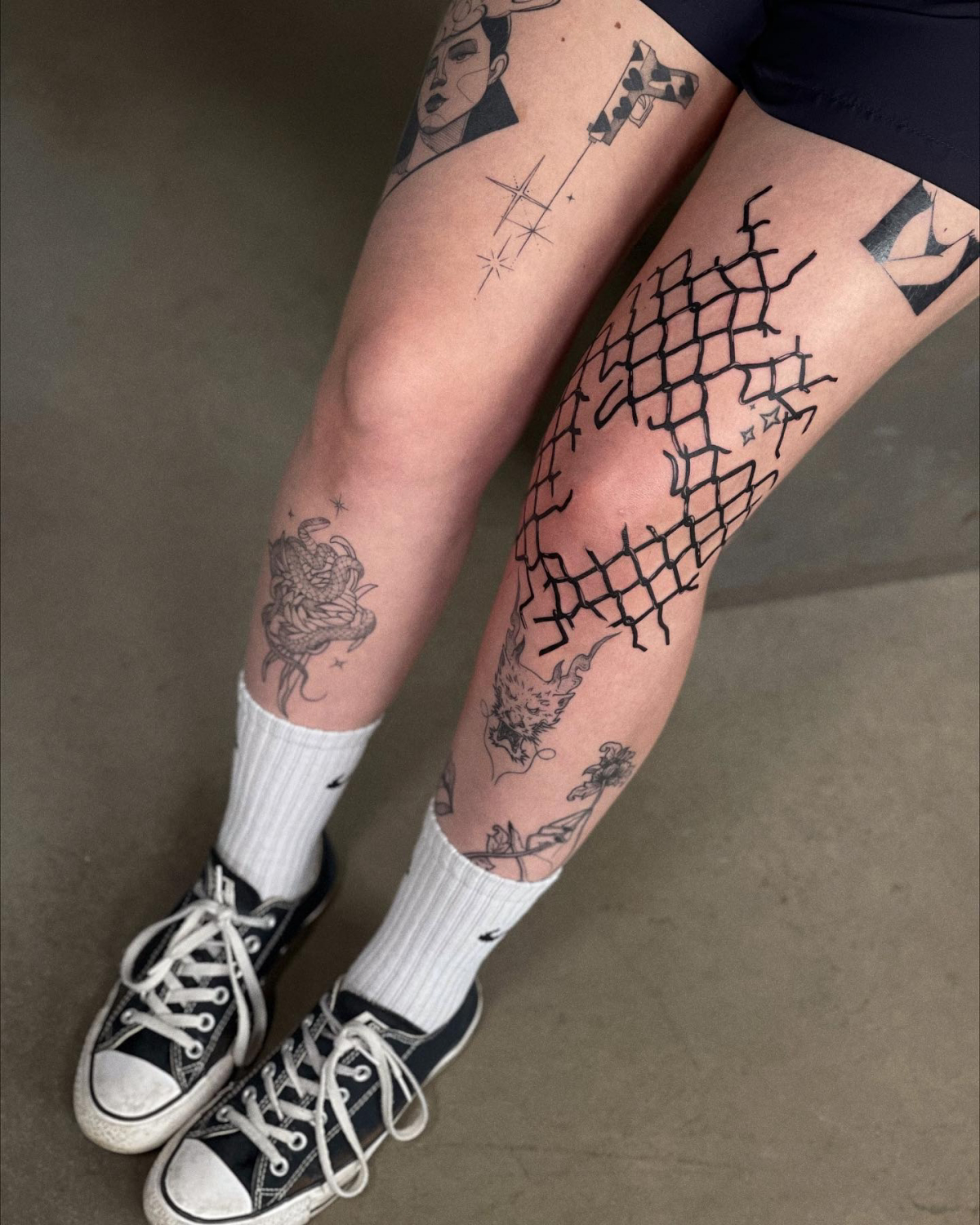
Quick tip: Before you even start, grab your aftercare supplies. You’ll need unscented antibacterial soap (like Dial Gold, which is about $5), a good fragrance-free lotion (like Lubriderm or Cetaphil, around $10), and some paper towels for patting it dry ($2).
Days 1-4: The Swollen Phase. Your knee is going to be incredibly swollen, red, and angry. Bending your leg will be a challenge. My advice? Plan to take it easy. If you have a desk job, bring a small stool to prop your leg up under your desk. If you have a physical job, you absolutely need to book 2-3 days off. There’s no way you’re climbing ladders on day two.
Days 5-14: The “Cracked Earth” Phase. The swelling will calm down, but thick scabs will form. As you bend your knee, they’ll crack and look pretty gnarly. DO NOT pick at them. Let them fall off on their own. Keep the area lightly moisturized to prevent the scabs from getting too dry and pulling out ink.
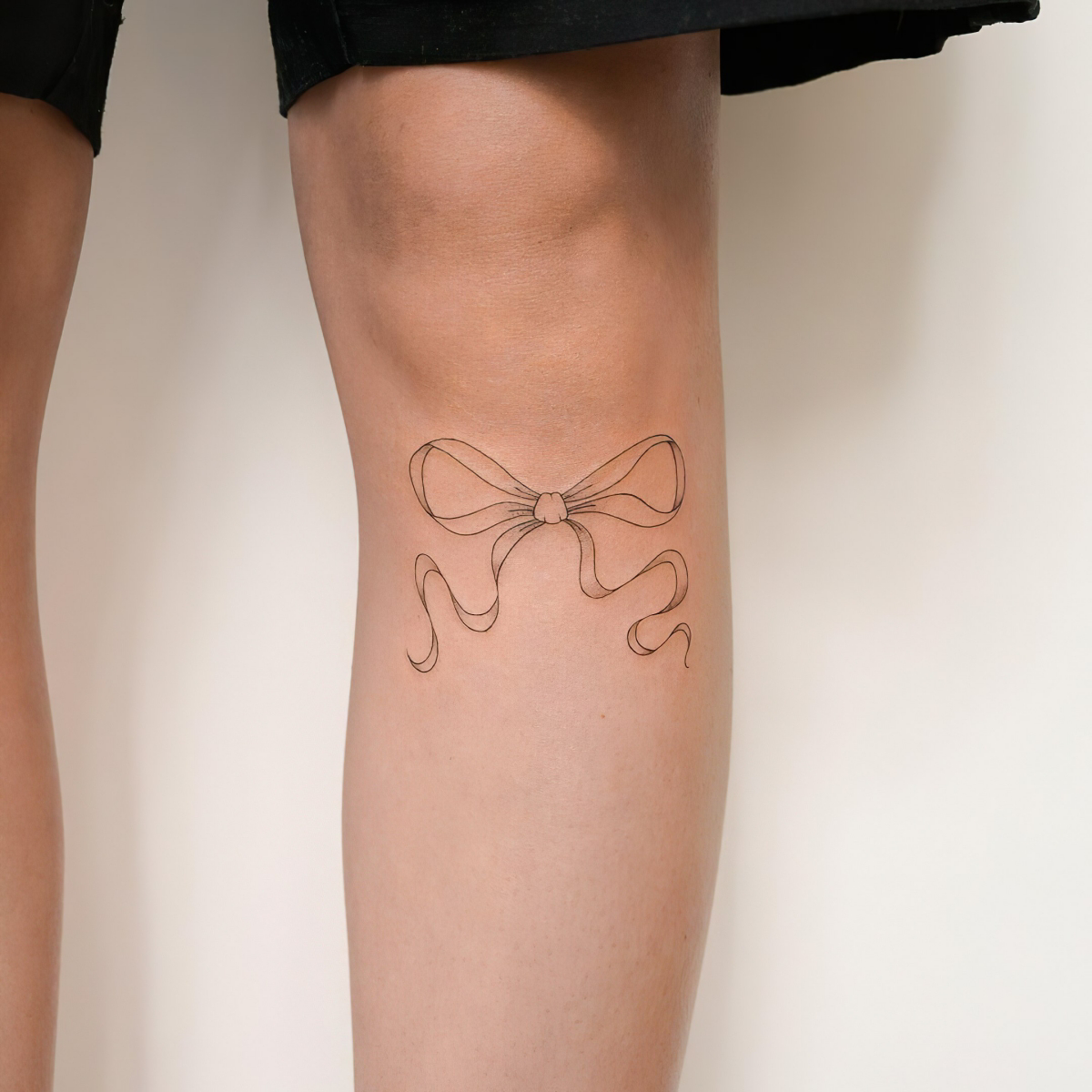
Weeks 2-4: The Itchy, Flaky Phase. This stage will test your sanity. As the scabs flake off, the new skin underneath will be maddeningly itchy. Whatever you do, don’t scratch!
A lesser-known trick: Keep your moisturizer in the fridge. Applying cold lotion feels amazing and will soothe that itch instantly without you having to damage your new art. During this time, the tattoo might look a little cloudy or faded. This is normal—it’s just a protective layer of new skin. The real vibrancy will come through soon.
Finding a Pro and What to Watch Out For
Your safety is everything. This starts with picking the right artist.
When you look at portfolios, don’t just look for pretty pictures of fresh tattoos. Here’s the pro move: ask to see a healed photo of a knee tattoo that is AT LEAST one year old. A fresh tattoo always looks good. A one-year-old knee tattoo tells the truth about an artist’s skill.

Ensure the shop is clean, licensed, and professional. The artist should open all needles in front of you and wear gloves. Don’t be afraid to ask to see their license; it should be displayed publicly.
During healing, watch for signs of infection: spreading redness, green or yellow pus, a foul smell, or a fever. If you see any of these, call a doctor immediately. It’s not worth risking your health.
The Bottom Line: Is It Worth It?
A knee tattoo is a serious commitment of time, pain, and money. And speaking of money, let’s be clear: a tattoo this difficult isn’t cheap, nor should it be. An experienced artist’s hourly rate is often in the $150-$300 range. A full, detailed kneecap design could take anywhere from 6 to 10 hours, usually split over a few sessions. So yeah, you’re looking at a significant investment. Save up and choose an artist whose work is worth every penny.
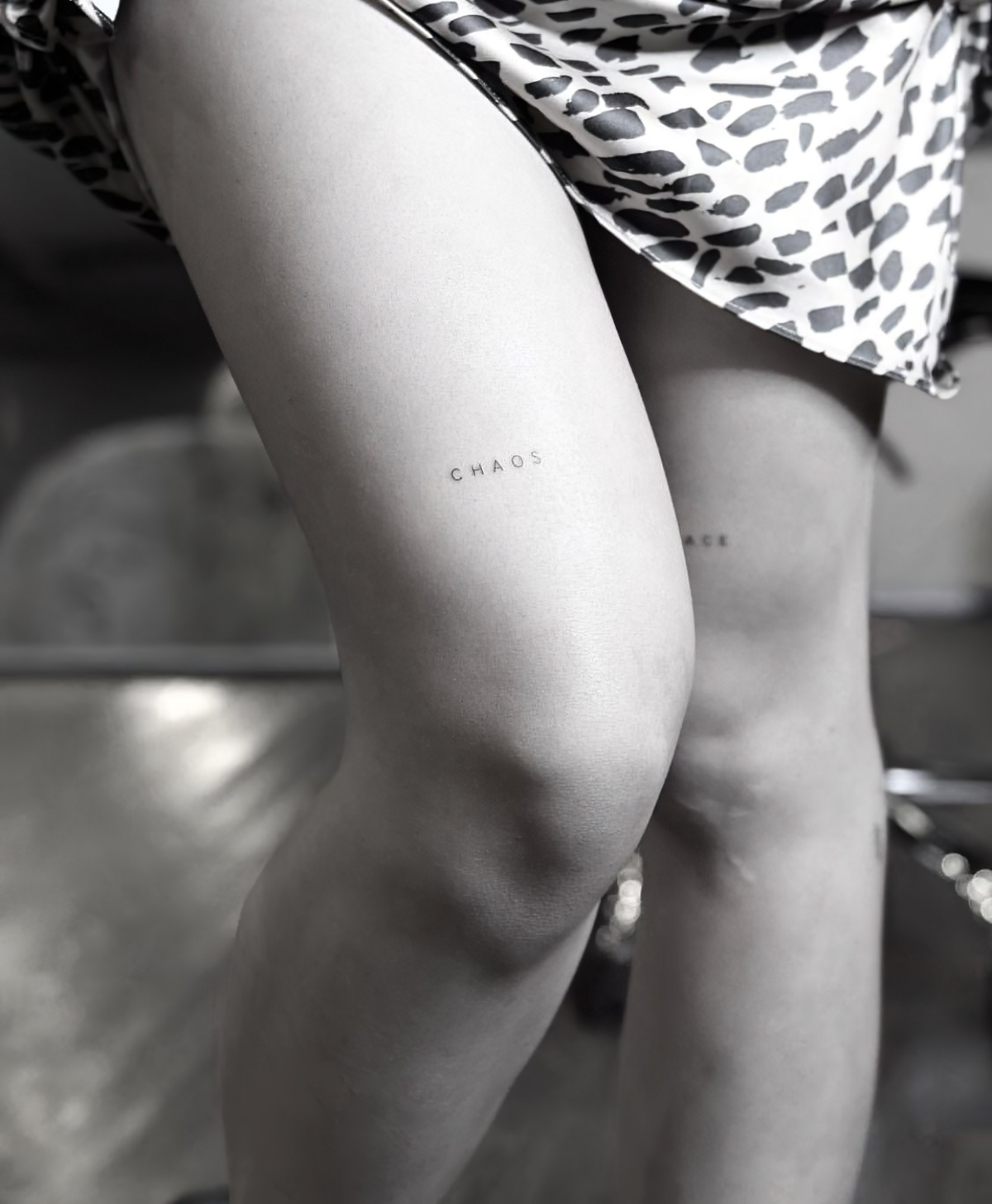
I’ve seen clients limp out of the shop, only to come back a couple of months later with a perfectly healed, incredible piece of art. There’s a real sense of accomplishment that comes with earning a solid knee tattoo. If you’re prepared for the journey, it’s one of the best tattoos you can get.
Galerie d’inspiration
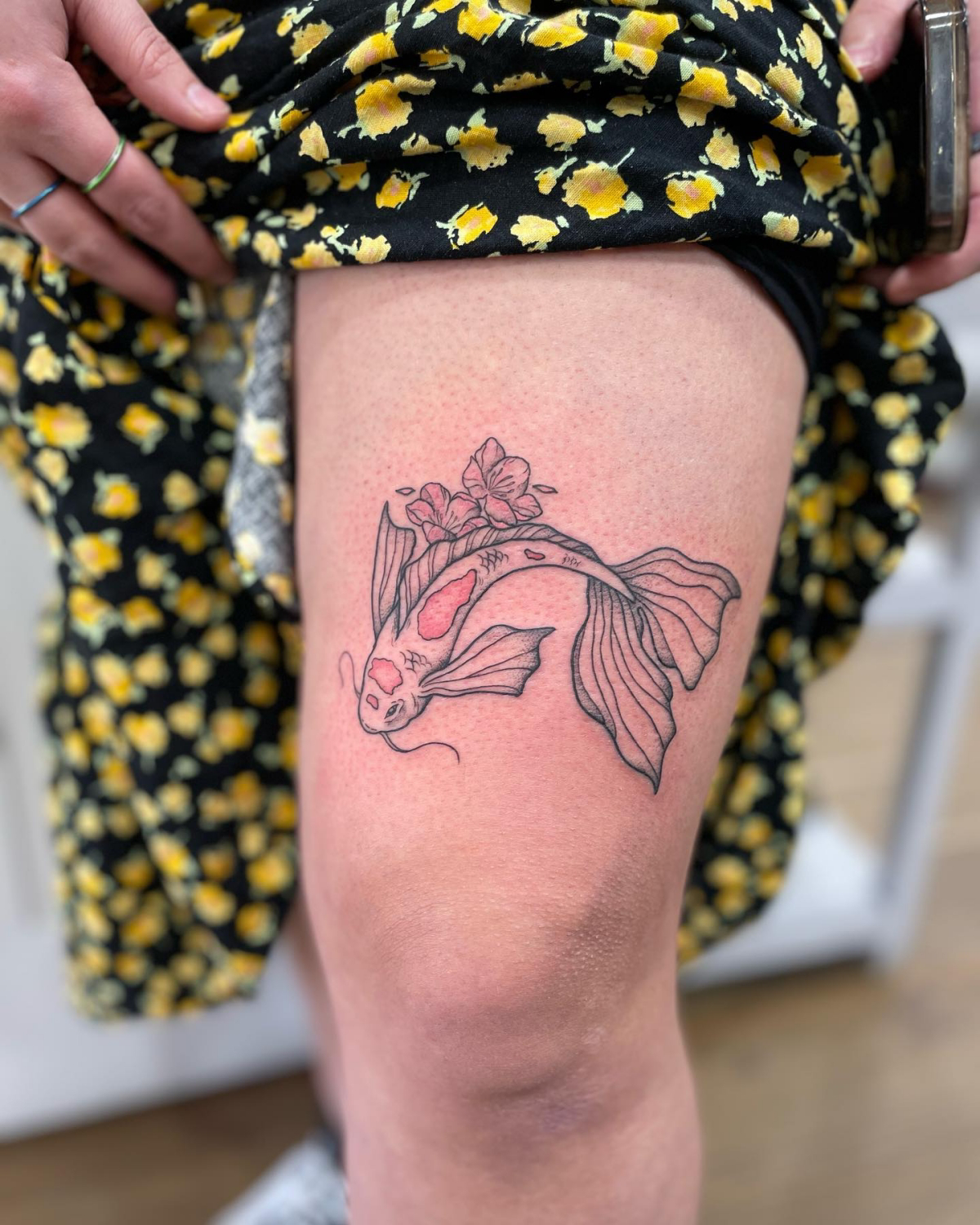
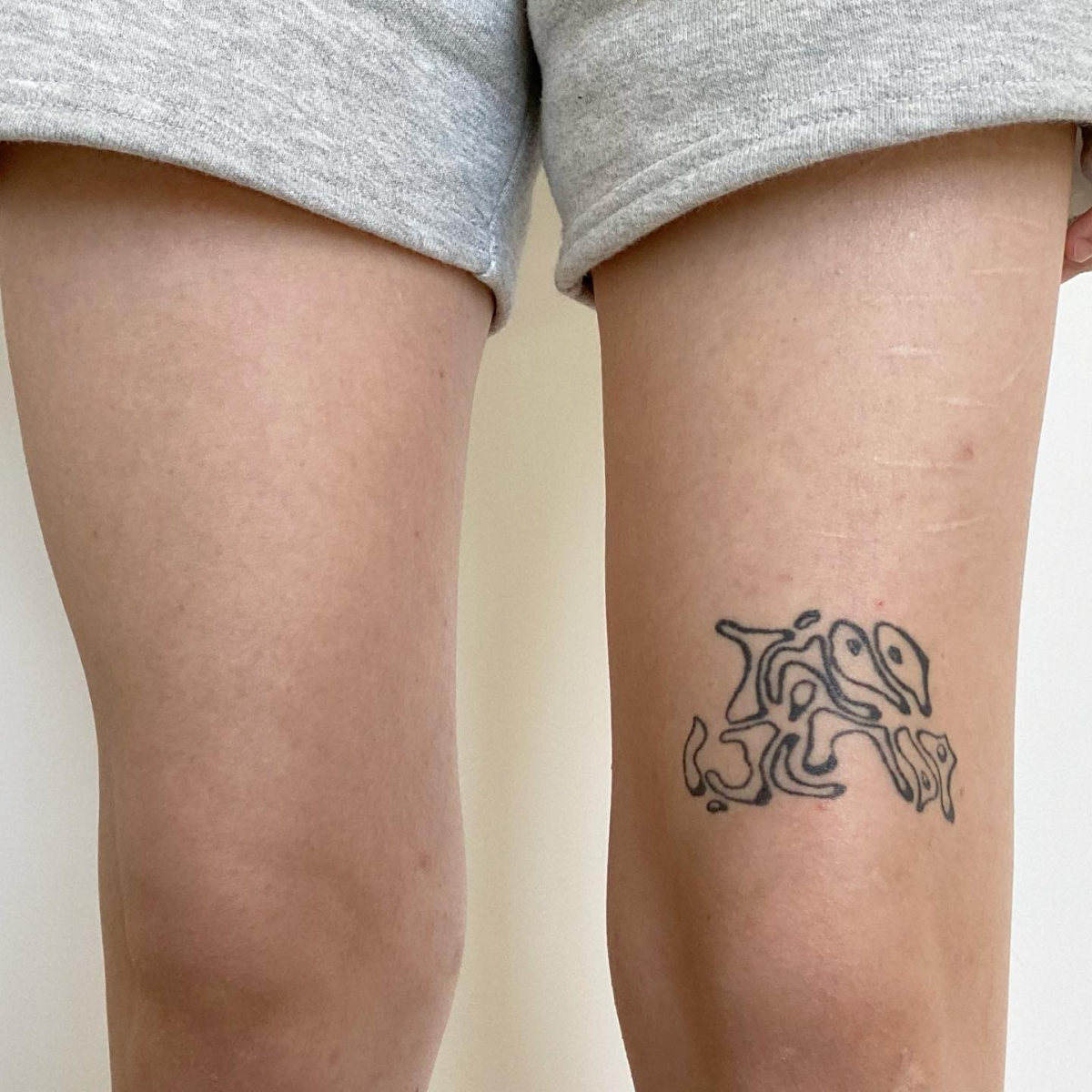
The Mandala vs. The Wrap-Around: When choosing a design, consider how it will interact with your anatomy. A central, circular design like a mandala or a geometric star uses the kneecap as a powerful focal point, looking bold and intentional both bent and straight. In contrast, an organic design, like a snake or floral vine, can wrap around the joint, creating a dynamic sense of movement and transforming as you walk. The best choice depends on whether you want a static statement or a piece that lives and breathes with you.
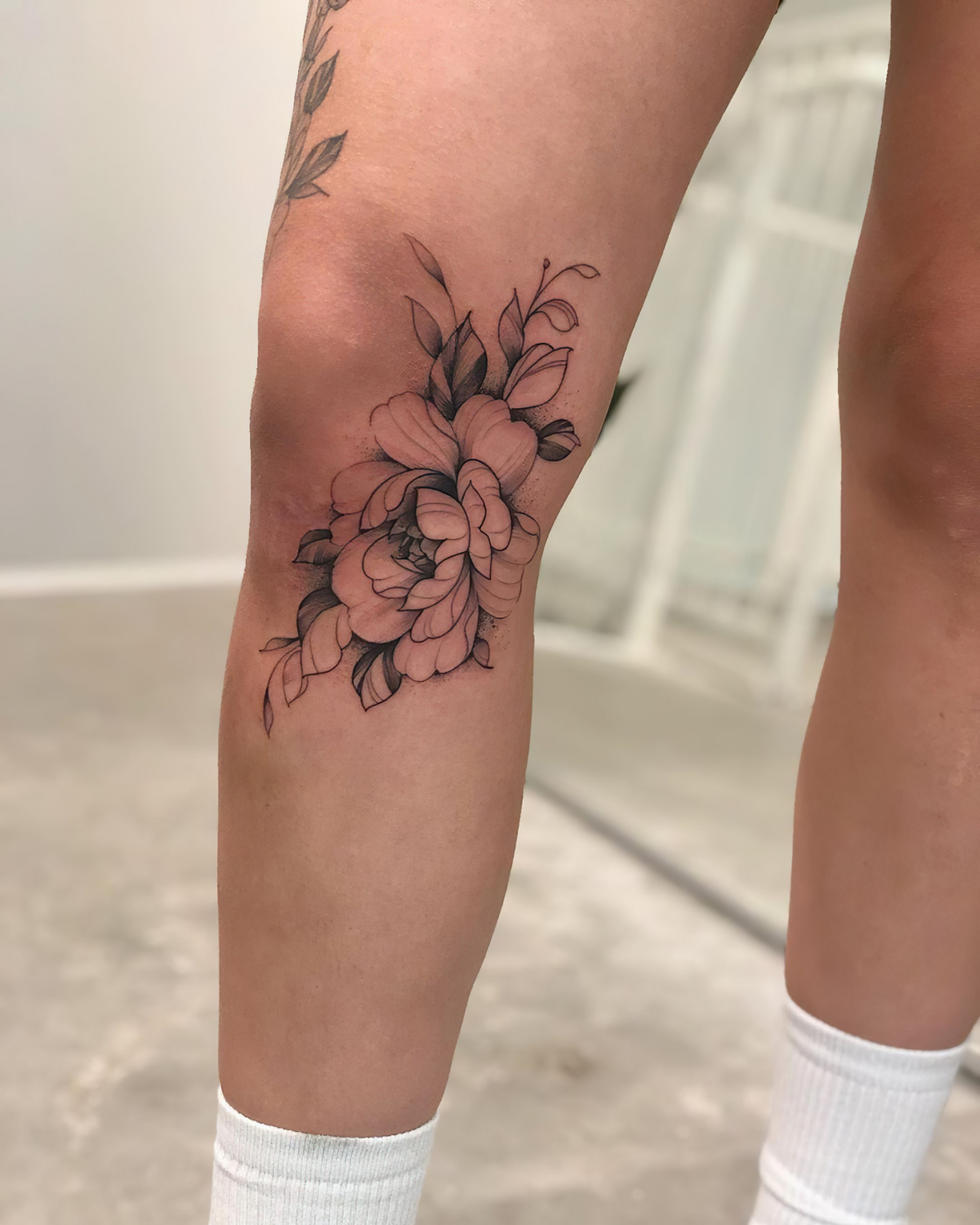
- Keep movement to a minimum for the first 48-72 hours. Your body needs rest to start healing properly.
- If your artist uses a second-skin bandage like Saniderm or Recovery Derm, leave it on for their recommended duration (usually 3-5 days). It’s your best defense against friction and bacteria.
- When you do start moving, avoid tight jeans or leggings. Opt for loose shorts or flowing pants to prevent irritation.
- Gently pat dry after cleaning; never rub the area.
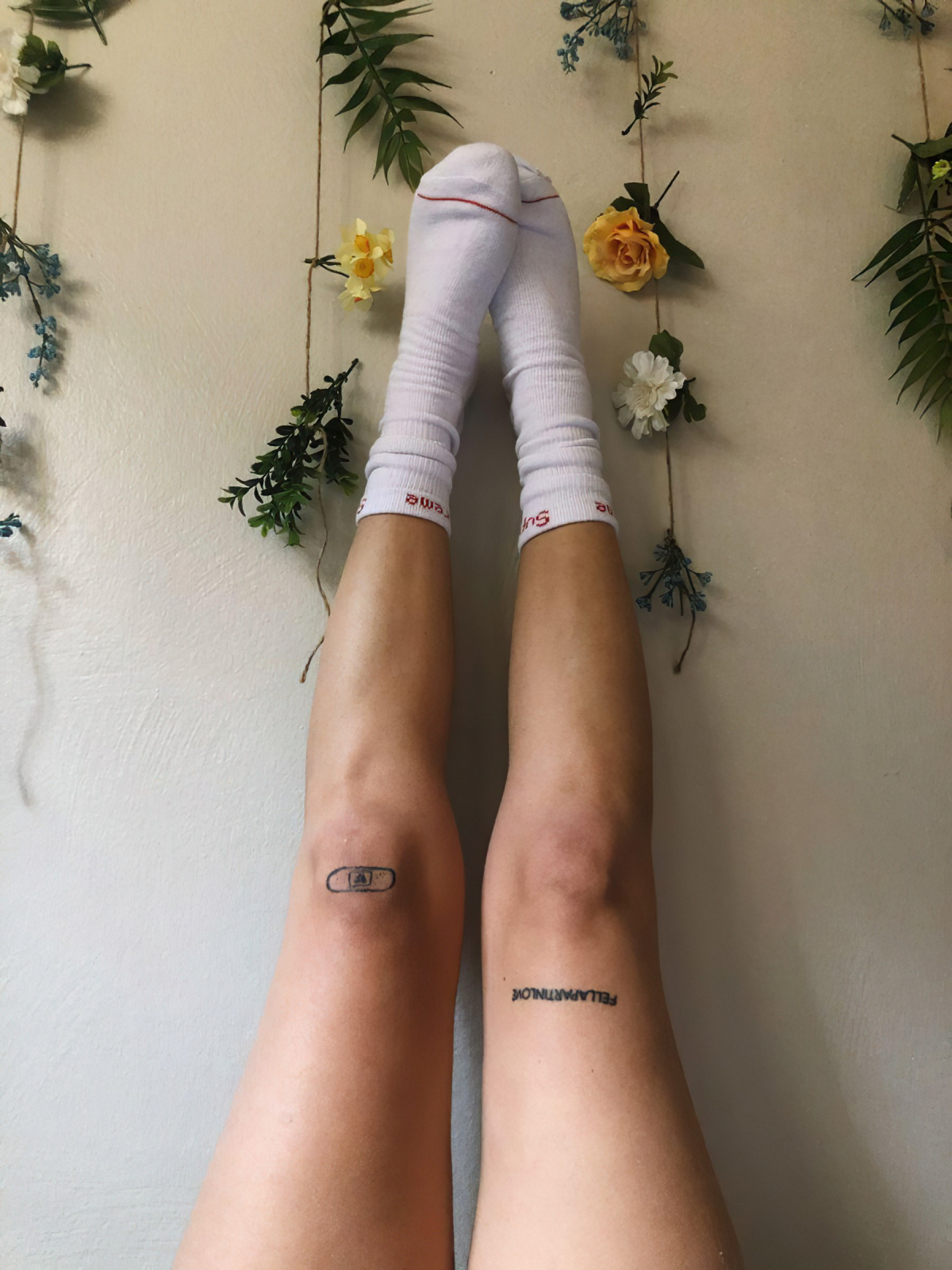
The skin over a constantly moving joint like the knee can take up to twice as long to fully settle and heal compared to a flat, stable area like a forearm.
What does this mean for you? Patience is non-negotiable. That initial healing phase might look fine after two weeks, but the deeper layers of skin are still fragile. Avoid strenuous activity, kneeling, and direct sun exposure for at least a month to ensure your ink stays crisp and vibrant for years to come.
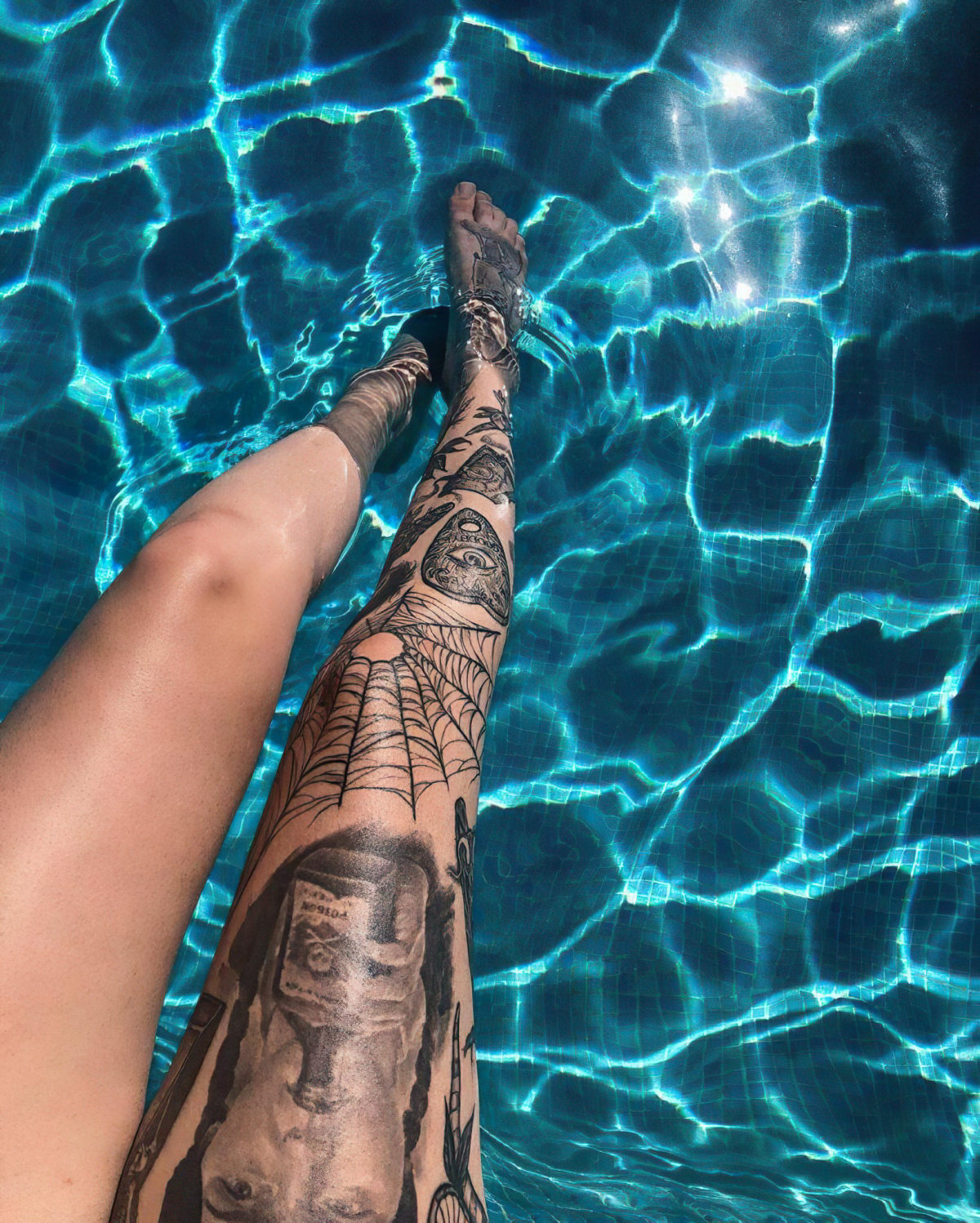
Thinking about using numbing cream to brave the session?
It’s a tempting idea, but one you absolutely must discuss with your artist beforehand. Many artists find that creams like TKTX or Zensa can change the skin’s texture, making it rubbery and difficult to saturate with ink evenly. This can compromise the final result and may even lead to a patchy heal. Some artists refuse to work on numbed skin for this reason. The golden rule: don’t show up with numbing cream on unless you’ve had a clear conversation and received a green light from your tattooer.
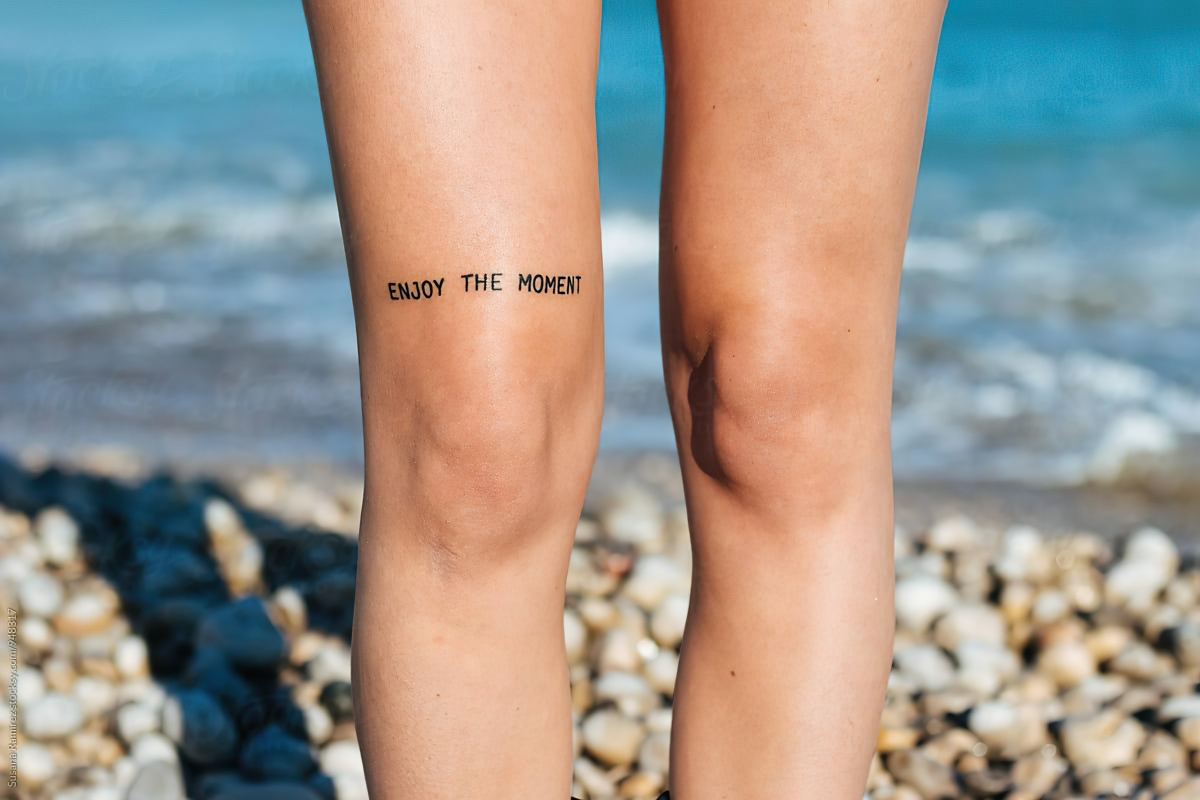
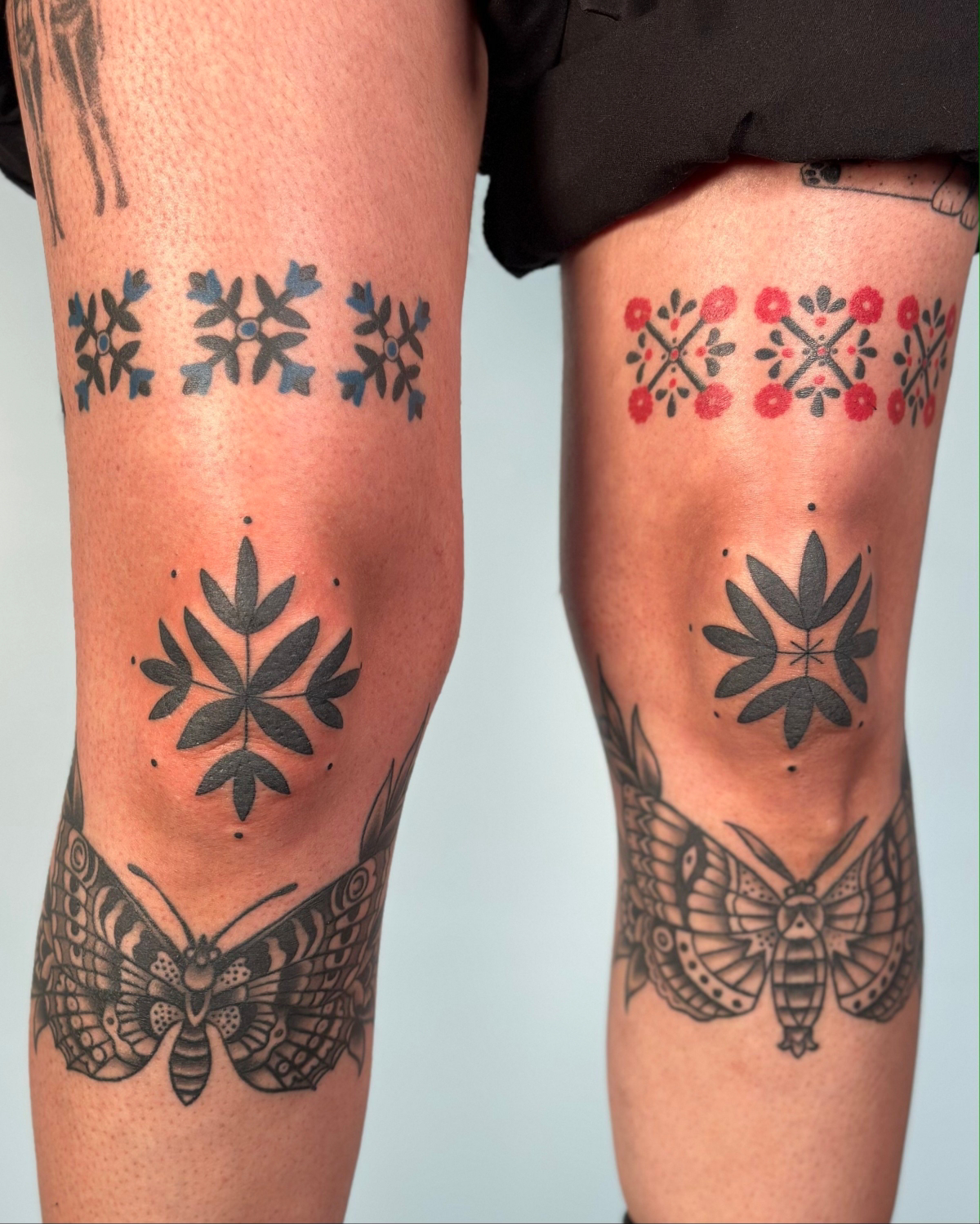
Crucial point: Not all great artists are great knee tattoo artists. Before you book, scrutinize their portfolio specifically for HEALED knee tattoos. Fresh tattoos always look good, but the real test is how the design holds up after months of bending, stretching, and living. Look for solid lines, even saturation, and a design that complements the leg’s shape when both straight and bent. An artist who proudly displays their healed knee work is an artist you can trust.
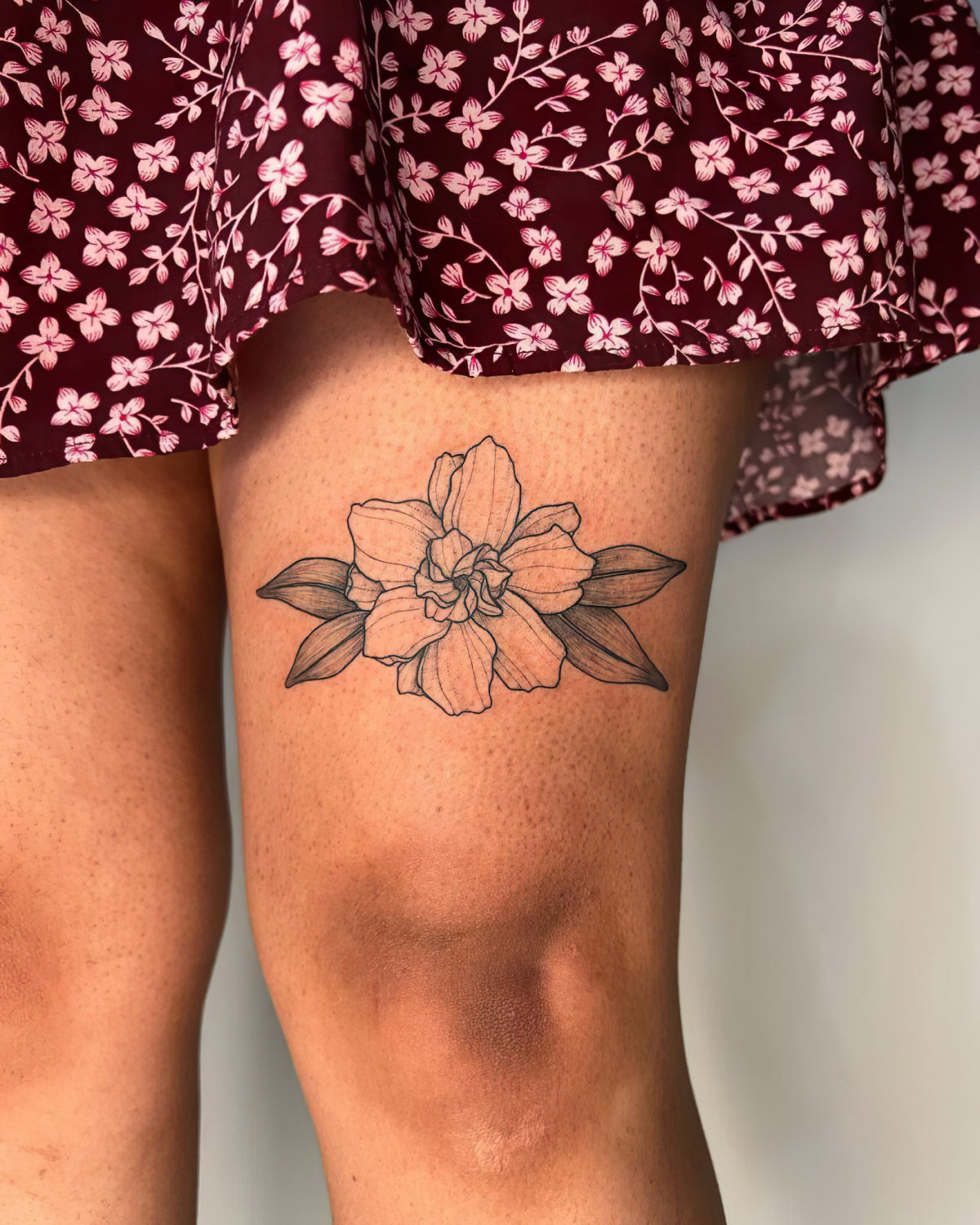
A knee tattoo is an investment, and the price reflects the high degree of difficulty. Here’s what’s factored into the cost:
- Artist’s Rate: An experienced specialist will command a higher hourly or flat rate. This is not the place to bargain hunt.
- Size & Coverage: A small design just on the kneecap will cost far less than a piece that wraps fully around the joint and into the thigh or shin.
- Complexity & Color: Intricate geometric work or full-color saturation takes significantly more time and skill than simple black linework.
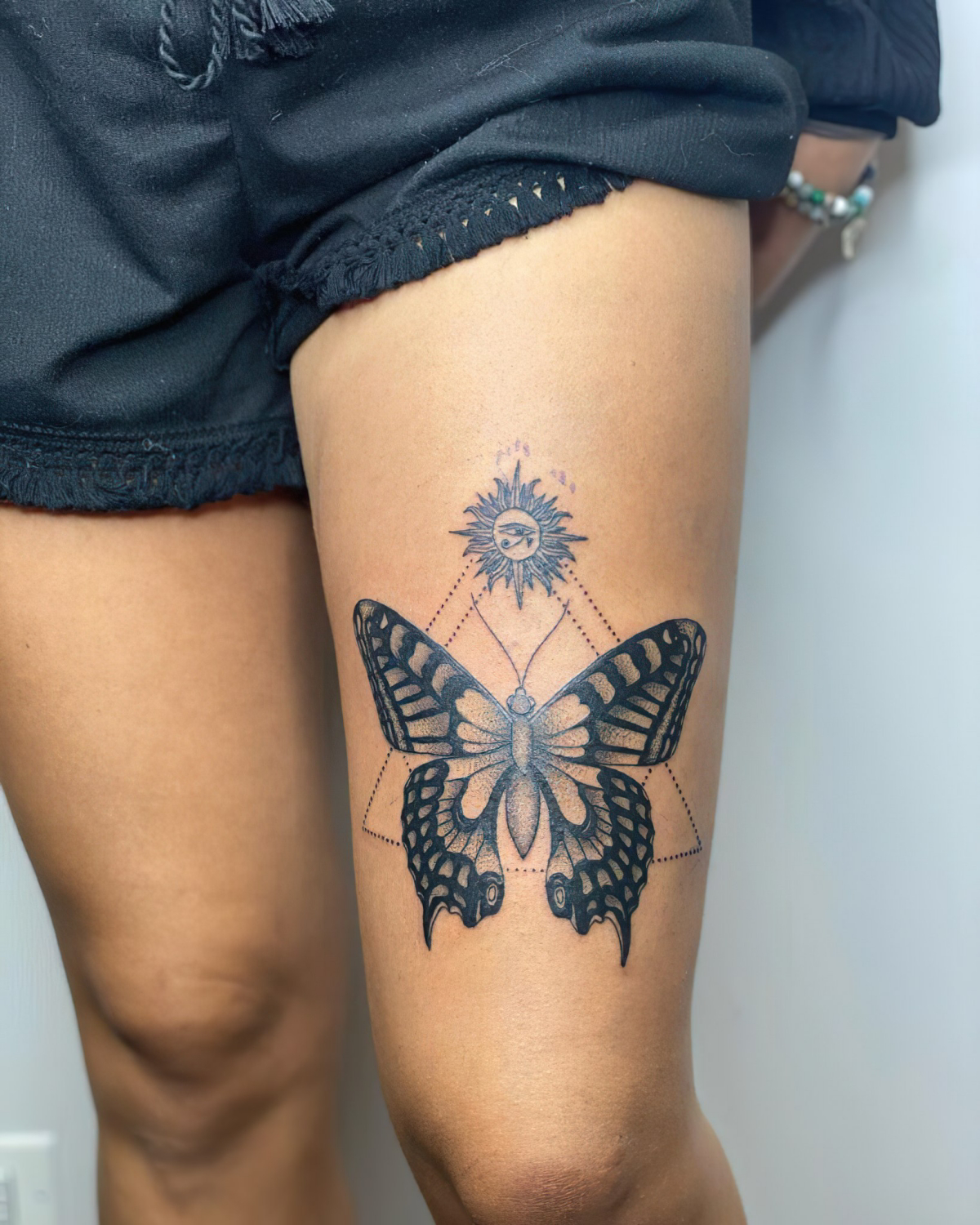
Fact: The knee is one of the most fade-prone areas on the body due to high UV exposure and constant friction from clothing.
This reality doesn’t mean you should avoid it, but you should commit to long-term care. Diligent use of high-SPF sunscreen is your tattoo’s best friend. Be prepared that, down the line, your vibrant piece may need a touch-up session to bring back its original punch. Consider it part of the tattoo’s life cycle.
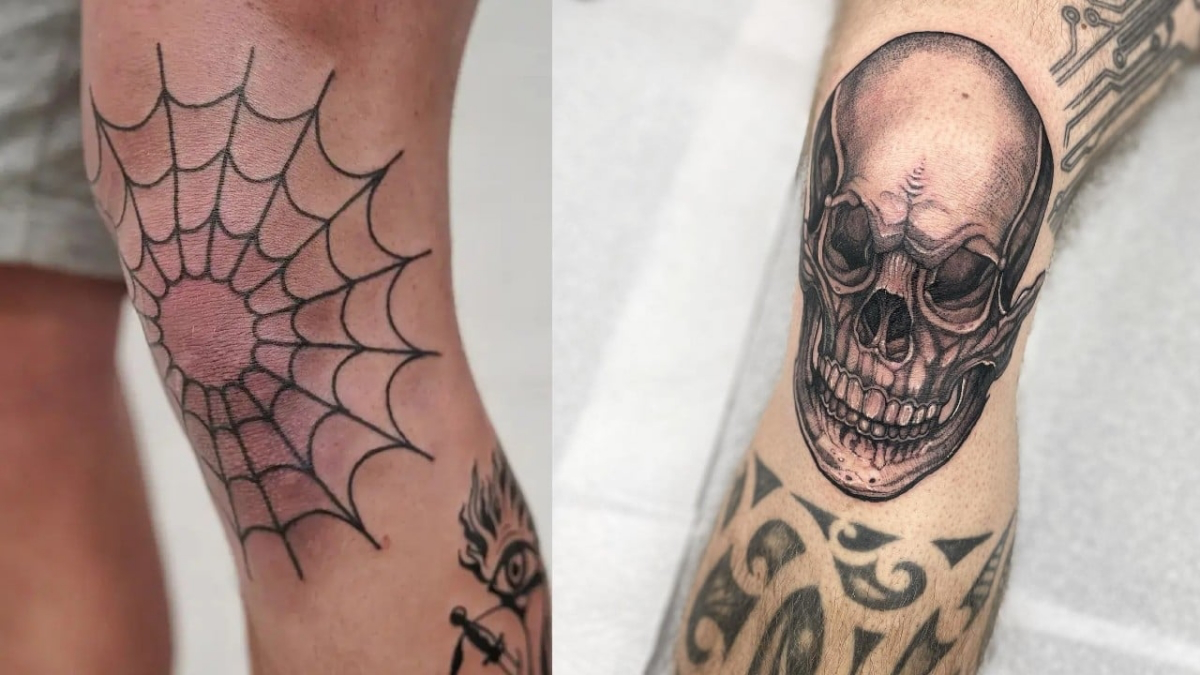
- It creates a stunning visual focal point on the leg.
- The design morphs and moves with you, giving it a life of its own.
- It demonstrates a serious commitment to the art of tattooing.
The secret to achieving this? Don’t fight the anatomy, embrace it. The most successful knee tattoos use the kneecap as a natural shield, eye, or centerpiece. Think of animal faces, intricate flowers like dahlias, spiderwebs, or sacred geometry where the patella is the anchor for the entire design.
Look beyond the usual for inspiration that truly honors the knee’s form and function. Delve into historical armor, specifically the articulated ‘poleyns’ that protected knights’ knees in battle. Their scalloped, layered, and central-boss designs are a perfect structural reference. Alternatively, explore the natural world for things that are beautiful, round, and tough: the intricate patterns of a turtle shell, the radiating crystals of a geode, or the layered petals of an artichoke.

